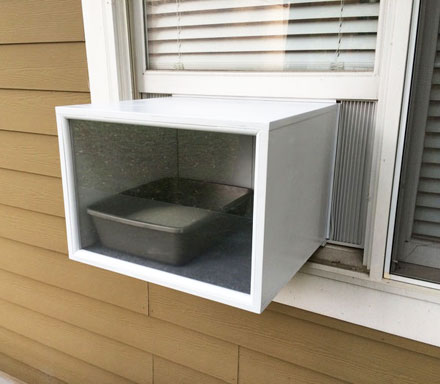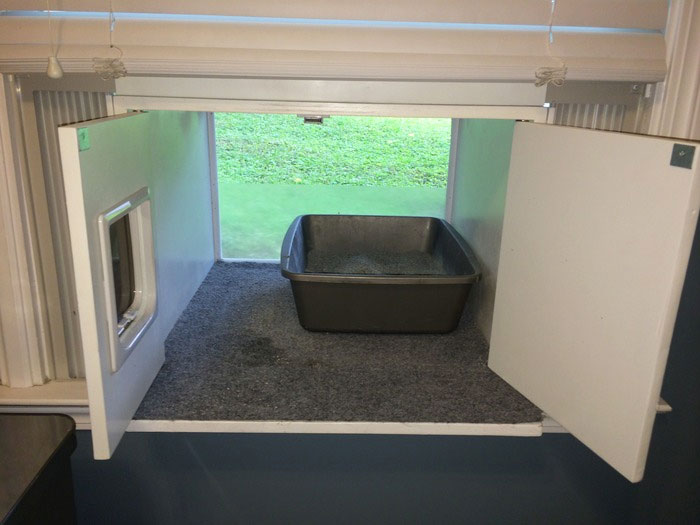Month 6, Day 1: Fridge still off (Happy Earth Day)
Today marks the first day of my sixth month with my fridge unplugged. My past two months’ electrical charges from Con Ed were $1.70. I used about two percent the average American’s power use.

I’m still avoiding packaging, so no cans or other sealed stuff. On the contrary, I’m finding fresh vegetables and fruit stay a long time without refrigeration.
Here’s my podcast episode describing my motivation. It’s not about one person’s emissions. It’s about a culture’s resilience. It’s about values.
How to live without a fridge in two steps
There’s no way before trying I could have imagined living without a fridge for a day or two. When I unplugged it the first time in December 2019, I could only think of what would go bad first. I had to eat the frozen food first. But that winter I made it three months until heading to my mom’s during the pandemic, when I kept it unplugged, but I wasn’t home so don’t count it.
This winter I unplugged it in November, when it wasn’t yet as cold so wasn’t sure how well keeping things on my windowsill would work. I worried about the couple dozen oranges and jalapenos in the freezer. They became the most delicious chutney and vodka infusions I’d ever made! Well, they were also the first.
That’s the point. Here’s the two-step process how to live without a fridge:
- Unplug your fridge
- Don’t die
I’ve been able to do both of those things. Everything that follows I found out from those things, but they’re all specific to my life. Your life would be different. Of course, humans lived without refrigeration for 300,000 years until a couple decades ago. I got the idea from an article about Vietnam, which is hot and humid, but New York winters are cold and dry, so I had to find different solutions.
For people who want to know more, most I find don’t really care. They’re just asking the first question that comes to mind. For them, I’ve learned there’s no point in getting into details of something they don’t care about. For people who care, they can learn an answer more meaningful to them just by following those steps. If they don’t want to follow those steps, they may not care as much as they think, but trying may lead them to.
My biggest challenge is doing it solo. If I cook enough for leftovers for five meals, I’ll take a couple days to eat them and they might go bad in that time. If two people were here, we might finish it the next day. So I’m cooking smaller portions.
Lessons and tactics
Ferment! I had no idea how easy fermentation was or how flavorful it made food. My first few times making sauerkraut, I thought I had to measure the proportion of salt perfectly, that I had to cut the cabbage just right, or mash them just right. I thought there was something special about cabbage.
Now I just sprinkle a little salt on any vegetable (and fruit for chutney) jam it in a jar and let it ferment. Same with vinegar. Just chop apples add water and some vinegar from the last batch. I have some sugar salvaged from a neighbor throwing theirs away, so I’ll use it until it runs out. It increases the vinegar’s acidity.
I use the winter cold. My windowsill is colder than the rest of the apartment, so I put food there. As the sun rises in the sky in the spring, it heats foods there more, so I can’t use it as much. I suspect I’ll plug the fridge back in before the end of this month.
I cook smaller meals. Since I can’t keep leftovers as cold, I don’t fill the pressure cooker as much. In February, food will keep a couple nights, but now only one night.
I choose hardier vegetables. Well, I don’t choose the vegetables. What’s around over the winter in New York are parsnips, beets, turnips, radishes, potatoes, and mostly root vegetables that don’t need as much refrigeration.
Sprout! I should have written this earlier. I started sprouting beans this winter. Who knew how easy creating fresh greens would be? I’ve sprouted several kinds, but mung beans are the easiest. Soaking overnight, then draining and leaving in a colander in the sink with a moist towel over it gives me a week of fresh greens for about thirty seconds of prep time. Dry mung beans are about three dollars a pound and stay on my shelf forever.
I’ll see what seeds I can get from the coop’s bulk section. I have mustard seeds. I don’t know if I can get other seeds for sprouting like broccoli without packaging.
Put greens in water. When my CSA delivered lettuce, I guess grown in a greenhouse, putting it in water kept it fresh and probably growing. Come to think of it, I put some in dirt and it grew, but I ended up eating it before it grew much.
I do without stuff that goes in the fridge. Since I avoid packaging, I can’t think of stuff that I used to keep in the fridge. I stopped getting ice cream or any dairy years ago. Vegetables and fruit taste so good, I don’t want or need ketchup or condiments. I have mustard seeds and plenty of other spices. I feel out of touch about what people put in fridges. I buy stuff to eat, not to store.
Next steps
I’ll probably plug the fridge in within the next month.
This fall I’ll start in October so I can hit six months unplugged.
Before then I’ll look into getting a solar panel and battery to see if I can disconnect from Con Ed for the winter. I’m paying over $20 a month fixed line fees for $1.70 in power. That doesn’t make sense. My main power use is the pressure cooker. It probably uses a lot of power, but I only use a couple times a week, so it might work. I’d love to go off the electrical grid in Manhattan. I use the building’s washing machines in the basement, though, but not the dryers. I don’t think I’ve used the elevator in a few years, but I’m sure I have once or twice.
I’ll experiment more with raw food. Now that I’m fermenting, I’m learning I don’t need to cook the beets, potatoes, and other root vegetables as much.
For next winter, I’d like to find someone to help me make a box to put in the window to keep things even colder. Something like this, that someone made for their cat, but for food.
Read my weekly newsletter

On initiative, leadership, the environment, and burpees

